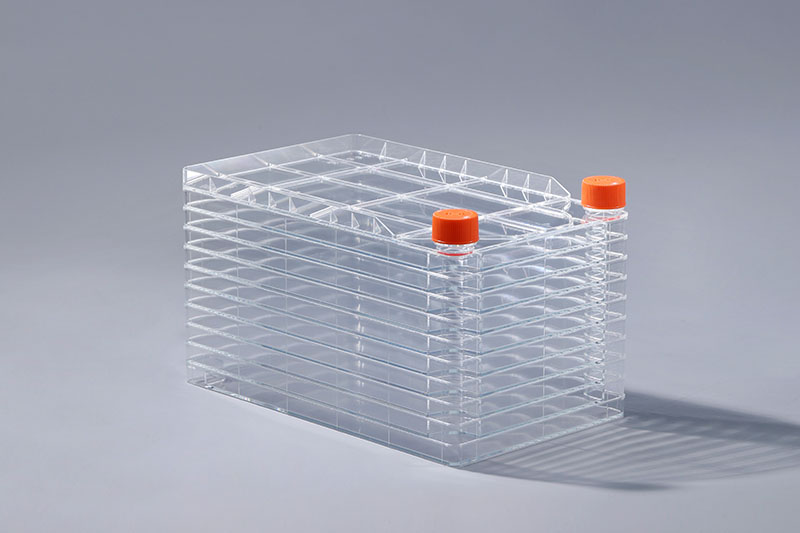je viacvrstvová štruktúra spotrebného materiálu pre bunkové kultúry, ktorá má výhody veľkej kultivačnej plochy, malého zaberania priestoru pre rastliny a nízkeho stupňa znečistenia. Aby sa zabezpečila kvalita produktu, sú potrebné rôzne testy a jedným z nich je počiatočný test na kontamináciu baktérií. produkt, ktorý sa má sterilizovať. Ide o mikrobiálny limitný test, ktorý vyjadruje mieru mikrobiálnej kontaminácie nešpecifikovaných sterilizovaných produktov a surovín, pomocných materiálov a hotových produktov pred sterilizáciou, vrátane množstva kontaminácie a kontrolných baktérií. , teda zvyčajná kontrola počtu kolónií, koliformných a patogénnych baktérií. Účelom tohto testu je poskytnúť referenčný index pre ďalšiu sterilizáciu bunkovej továrne, ako je sterilizačná dávka, aby sa zabezpečil sterilizačný účinok. Dá sa povedať, že ide o test na monitorovanie účinnosti sterilizačného procesu.To Suma sumárum, účelom počiatočnej detekcie kontaminujúcich baktérií v bunkovej továrni je potvrdenie sterilizačnej dávky, sledovanie účinnosti sterilizačného procesu, a tým zabezpečenie sterility produktu.Na analýzu biozáťaže sa na testovanie odobralo najmenej 10 vzoriek z troch samostatných šarží produktu. Analýza biozáťaže sa musí vykonať podľa overenej a dostupnej metódy. Vypočítalo sa priemerné biologické zaťaženie každej dávky a priemerné biologické zaťaženie 30 vzoriek sa použilo ako celkové priemerné biologické zaťaženie troch dávok. Ak je priemerná biologická záťaž jednej z troch dávok dvakrát alebo viackrát väčšia ako celková priemerná biologická záťaž, na overenie dávky sa použije priemer dávky, v opačnom prípade sa na overenie dávky použije celkový priemer troch dávok.
Generally speaking, the initial contamination bacteria test is the estimated value of the bioburden of the product to be sterilized. It is a microbial limit test, which refers to the degree of microbial contamination of non-specified sterilized products and raw materials, auxiliary materials and finished products before sterilization, including the amount of contamination and control bacteria. , that is, the usual colony count, coliform and pathogenic bacteria inspection. The purpose of this test is to provide a reference index for the next sterilization of the cell factory, such as the sterilization dose, so as to ensure the sterilization effect. It can be said to be a test to monitor the effectiveness of the sterilization process.
For bioburden analysis, at least 10 samples were drawn from three separate batches of product for testing. Bioburden analysis must be performed according to a validated and available method. The average bioburden of each batch was calculated and the average bioburden of 30 samples was used as the total average bioburden of the three batches. If the average bioburden of one of the three batches is two or more times greater than the total average bioburden, the batch average is used for dose verification, otherwise, the overall average of the three batches is used for dose verification.
To sum up, the purpose of the initial contaminating bacteria detection in the cell factory is to confirm the sterilization dose, monitor the effectiveness of the sterilization process, and thus ensure the sterility of the product.
The FAI climbed 5.9 percent year-on-year in the first 11 months of 2018, quickening from the 5.7-percent growth in Jan-Oct, the National Bureau of Statistics (NBS) said Friday in an online statement.
The key indicator of investment, dubbed a major growth driver, hit the bottom in August and has since started to rebound steadily.
In the face of emerging economic challenges home and abroad, China has stepped up efforts to stabilize investment, in particular rolling out measures to motivate private investors and channel funds into infrastructure.
Friday's data showed private investment, accounting for more than 60 percent of the total FAI, expanded by a brisk 8.7 percent.
NBS spokesperson Mao Shengyong said funds into weak economic links registered rapid increases as investment in environmental protection and agriculture jumped 42 percent and 12.5 percent respectively, much faster than the average.
In breakdown, investment in high-tech and equipment manufacturing remained vigorous with 16.1-percent and 11.6-percent increases respectively in the first 11 months. Infrastructure investment gained 3.7 percent, staying flat. Investment in property development rose 9.7 percent, also unchanged.
 English
English



















































